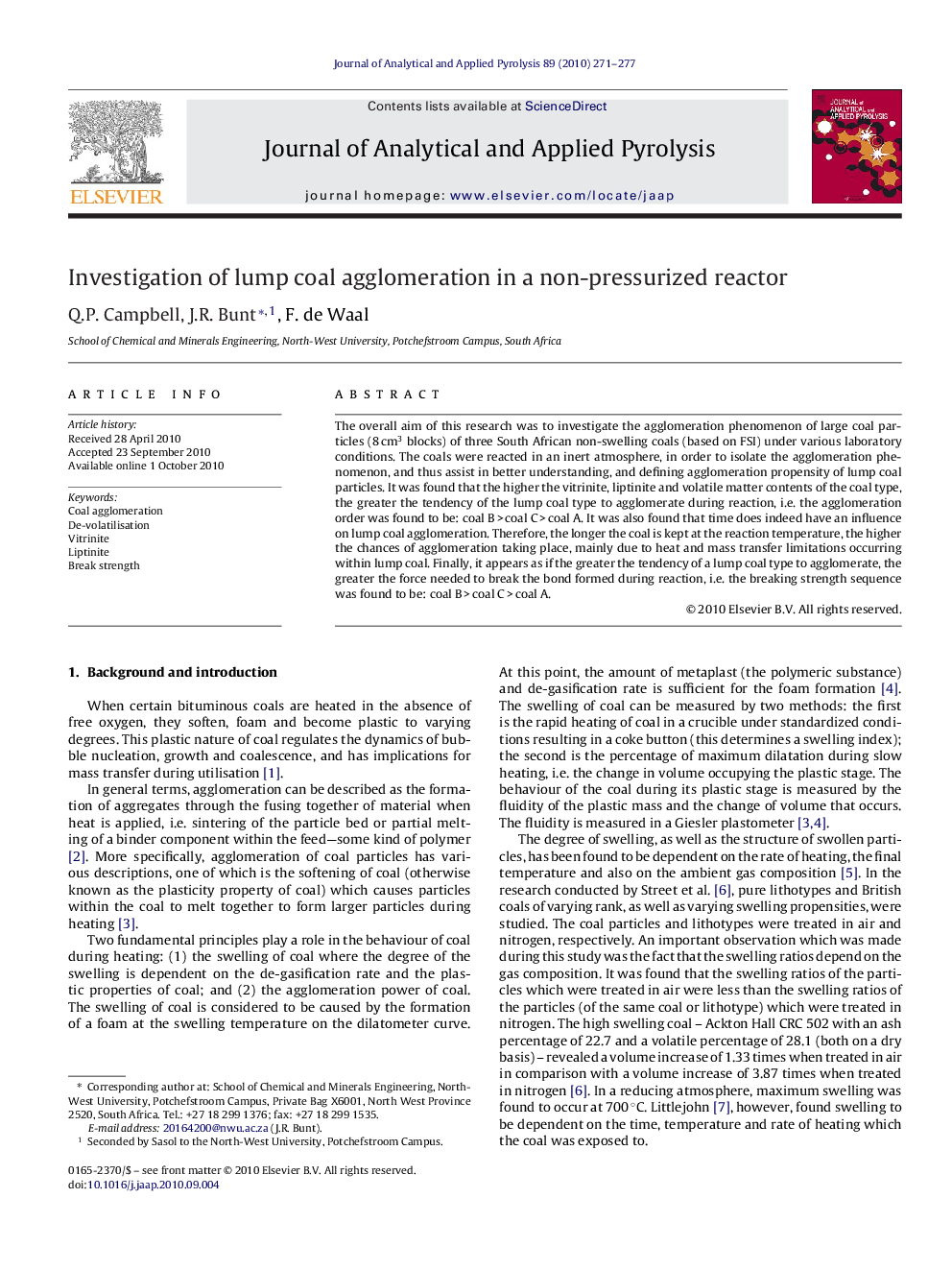| Article ID | Journal | Published Year | Pages | File Type |
|---|---|---|---|---|
| 1197643 | Journal of Analytical and Applied Pyrolysis | 2010 | 7 Pages |
The overall aim of this research was to investigate the agglomeration phenomenon of large coal particles (8 cm3 blocks) of three South African non-swelling coals (based on FSI) under various laboratory conditions. The coals were reacted in an inert atmosphere, in order to isolate the agglomeration phenomenon, and thus assist in better understanding, and defining agglomeration propensity of lump coal particles. It was found that the higher the vitrinite, liptinite and volatile matter contents of the coal type, the greater the tendency of the lump coal type to agglomerate during reaction, i.e. the agglomeration order was found to be: coal B > coal C > coal A. It was also found that time does indeed have an influence on lump coal agglomeration. Therefore, the longer the coal is kept at the reaction temperature, the higher the chances of agglomeration taking place, mainly due to heat and mass transfer limitations occurring within lump coal. Finally, it appears as if the greater the tendency of a lump coal type to agglomerate, the greater the force needed to break the bond formed during reaction, i.e. the breaking strength sequence was found to be: coal B > coal C > coal A.
